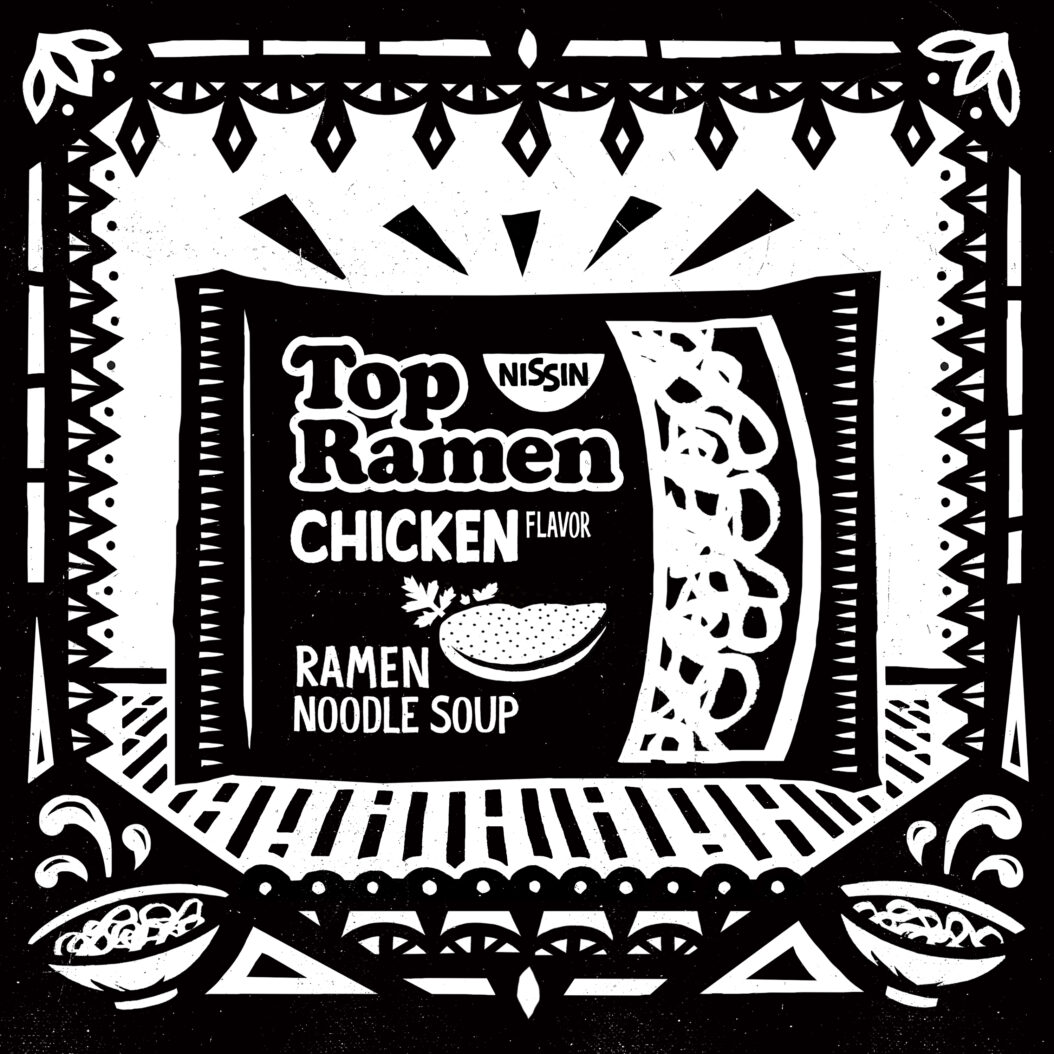
“A short story about a long noodle.”
If we’ve learned anything by delving into the history of shelf-stable food, it’s that the United States has a looooong history of inventing convenience meals and exporting them all over the world. Thanks, USA! It’s with joy, therefore, that we take a moment to talk about a product that came from Japan, and found a home here (and just about everywhere else.) I’m speaking, of course, of Instant Ramen Noodles.
For any ramen novices out there, here’s a little background. Ramen is a Japanese dish with roots in China. It consists of long wheat noodles, often served in a savory broth and garnished with goodies like soft boiled egg, various meats, and veggies. In terms of fast food, you’d be hard-pressed to find a meal more complex, satisfying, or slurp-ful.
So why INSTANT ramen? Was it just an example of taking a popular restaurant dish, and giving folks a way to make it at home? The answer is a compelling mix of post-war occupation, international trade, and economic depression. Let’s dig in…
The year is 1945. World War II is over. Japan has suffered devastating losses, and its economy is in ruins. To further complicate matters, a series of poor rice harvests and a government-run food distribution system is making it hard for folks to get enough to eat. In this post-war disaster zone, hungry workers line up in the cold to buy bowls of hot ramen from black market noodle stands.
But soon, and Japan is awash in wheat. “How!?” you might ask. “Good question!” I’d reply. The USA has been hanging around Japan since the war, and is fully aware of the food shortages. Back home, the wheat harvest is abundant, leading to a historic surplus of the grain. Much of this is styled as aid for countries facing hunger. Like Japan.
At this point, the Ministry of Health was like, “Ok, we’ve got all this this American wheat. I guess we’ll make a ton of bread and everyone can eat!” A businessman named Momofuku Ando was aghast. Bread eating wasn’t really a big thing in Japan, but noodles were. Why disrupt cultural tradition? Why not use the imported wheat for ramen? “Too risky!” said the Ministry. “Noodle companies are small, and unstable, and hard to control. We can’t run a government food program through them!” (I’m paraphrasing, for anyone still paying attention.) The Ministry suggested that if Ando was so passionate about his noodle idea, he should find a way to do it himself.
From that day forward, Ando was obsessed with finding a way to make a ramen product that folks could enjoy at home, and that would ALSO help end world hunger. This guy had goals, folks. He knew he had to find a way to dehydrate fresh noodles, so they could be rehydrated quickly and easily. Did he have any food science experience? Certainly not! Was there any reason to believe that he would achieve his goal? Not really! But he did, and the answer lie in flash frying.
After nearly a year of trying various forms of dehydration, a frustrated Ando flung a batch of ramen noodles into his wife’s tempura oil. (I like to imagine that she was annoyed by this interruption to her meal prep, but history does not record this detail.) The noodles emerged completely dehydrated, and with a rough, perforated texture that made for remarkably easy rehydration. Finally! A breakthrough! Things moved quickly from there, and instant ramen hit store shelves in 1958.
The initial flavor was “Chikin,” which was delicious and surprisingly expensive. I saw one breakdown that said the cost was about 6 times that of fresh noodles. But remember, it’s 1958! Japan is doing MUCH better economically by now, and folks are ready to try new things and save time at home. Instant Ramen, however expensive, is a spectacular success. Over the next decades, it marches steadily across the globe, finding enthusiastic fans wherever it goes. The cost comes down as production kinks are ironed out.
Instant ramen is a commercial success! But what about Ando’s big goal of ending world hunger? I’m happy to report that in 1997, he founded the World Instant Noodle Association with the aim of strengthening the instant noodle industry, but ALSO to provide global food aid. Between 1997 and 2021, the organization donated almost 7 million servings of noodles to folks in need. Not too shabby.
I’ll close this out by saying that instant ramen is one of my all-time favorite Indestructible Foods. It was invented to bring sustenance to as many folks as possible, and 65 years later it still is. If you’ve got 3 minutes and 35 cents, you’ve got a hot meal. And in times of trouble, there’s just nothing more important.
